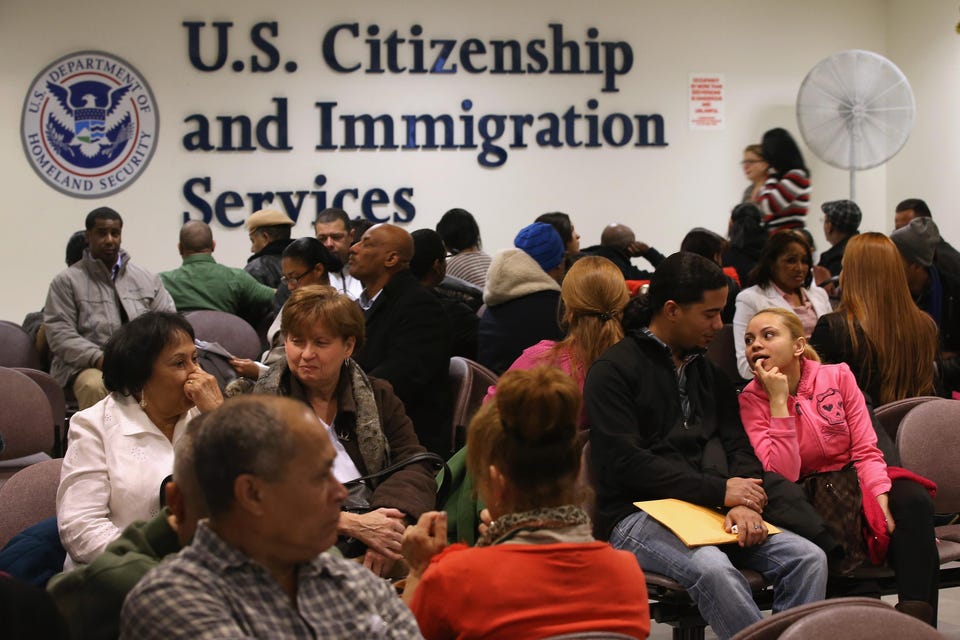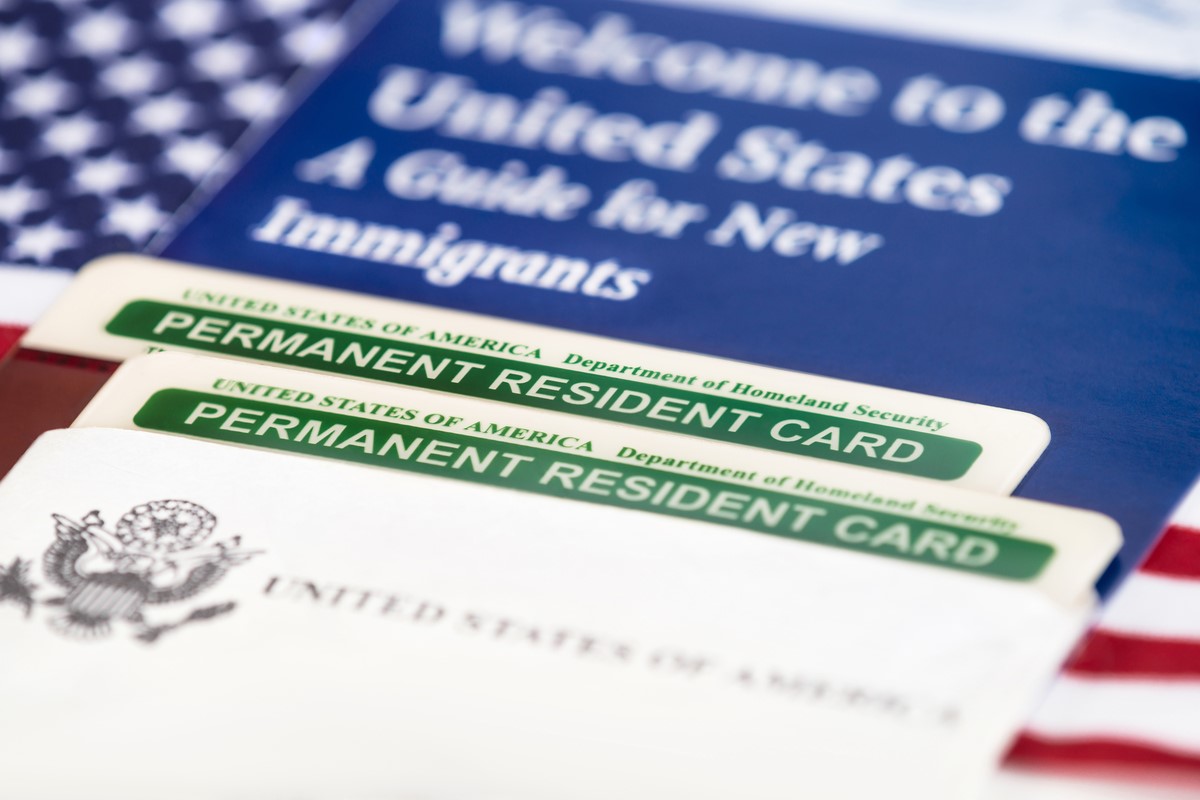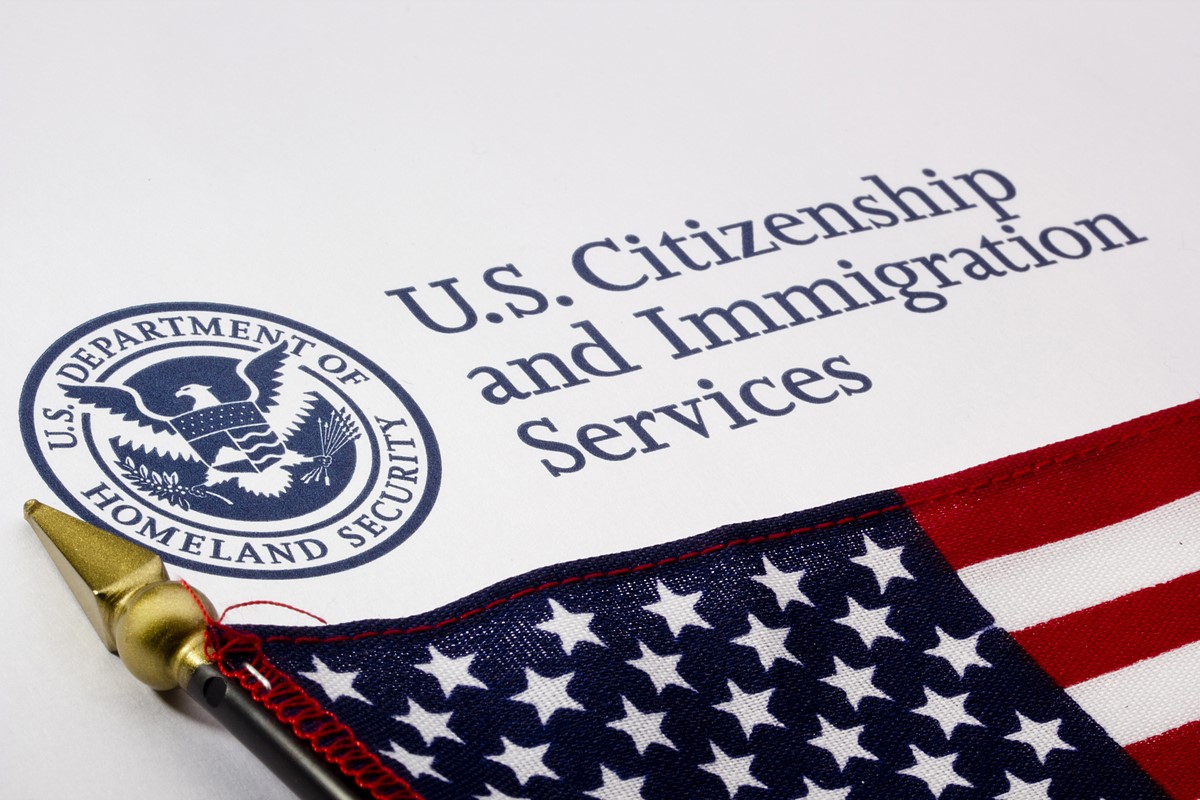Want to Buy U.S. Citizenship?
For Foreign Investors,
It now Costs $1.05 Million
Veracor is a leading full service financial firm
sponsoring EB-5 immigration-linked investment funds.
Proven EB-5 Immigrant
Investor Visa Programs
Proven EB-5 Immigrant
Investor Visa Programs
Wealthy foreigners have had special access to U.S. citizenship since 1990. For $900,000, then $1.8 million, and now $1.05 million, the EB-5 Visa program has offered a 2-year path to citizenship. Over the last 14 months, the path has changed, disappeared, and reappeared in different forms.
Uncertainty has stalled visa applications and large commercial projects. But with passage of legislation in March, 2022, and upcoming regulations by U.S. Citizenship and Immigration Services (“UCSIS”), much of the path is now clear again. The information below walks through the rules to know going forward.
As UCSIS puts it, Congress created the EB-5 path to citizenship to “benefit the U.S. economy by providing an incentive for foreign capital investment that creates or preserves U.S. jobs.” It’s the fifth “employment-based” path to permanent residency after those for (1) priority workers, (2) professionals holding advanced degrees, (3) skilled workers, and (4) “certain special immigrants.” Before 1990, a foreign investor who couldn’t meet those criteria had limited options, even if wealthy.
Those granted an EB-5 visa receive conditional permanent resident status for a 2-year period (i.e., a “green card”). After two years of compliance with the requirements (discussed below), permanent residence is pretty much guaranteed. The same benefits apply for one’s immediate family members.
FORIEGN INVESTMENTS
Foreigners have invested over $40 billion in U.S. businesses through the EB-5 program.
ELIGIBLE EB-5 ANNUAL VISAS
The EB-5 program is limited by statute to 10,000 visas annually.
INVESTMENT REQUIREMENT
Now $1.05 million, the EB-5 Visa program offers a 2-year path to citizenship.

Latest News
The USCIS administers the EB-5 Program. Under this program, investors (and their spouses and unmarried children under 21) are eligible to apply for a Green Card (permanent residence) if they: 1. Make the necessary investment in a commercial enterprise in the United States; and 2. Plan to create or preserve 10 permanent full-time jobs for qualified U.S. workers and: 3. This program is known as EB-5 for the name of the employment-based fifth preference visa that participants receive. Congress created the EB-5 Program in 1990 to stimulate the U.S. economy through job creation and capital investment by foreign investors. In 1992, Congress created the Immigrant Investor Program, also known as the Regional Center Program, which sets aside EB-5 visas for participants who invest in commercial enterprises associated with regional centers approved by USCIS based on proposals for promoting economic growth.

EB-5 Visa Requirements
Foreign investors must meet specific regulatory and United States Citizenship and Immigration (USCIS) requirements to obtain their permanent residency through the EB-5 visa program. In general, the investor must meet capital investment amount requirements, job creation requirements, and ensure that the business receiving the investment qualifies for the EB-5 program, as specified under 8 C.F.R. § 204.6. EB-5 visa applicants, their spouse, and their children under 21 will obtain their permanent residency green card once all requirements have been successfully met and approved by the USCIS.

The Path Begins Here
If you and or your immediate family are interested in obtaining permanent residency in the United States and are qualified as a foreign investor the process starts here. The team at Veracor specialize in investment-linked funds specifically designed to provide a path to permanent residency in the United States utilizing the EB-5 Immigrant Investor Visa Program. Our legal team of experts will assist you in every step of this complex process. The EB-5 visa is a great option for investors and entrepreneurs to get a permanent resident green card. With an EB-5 visa, you can live and work in the United States.
The Path to Permanent
Residency in the United States
Congress created the EB-5 path to citizenship to “benefit the U.S. economy by providing an incentive for foreign capital investment that creates or preserves U.S. jobs.” EB-5 name origin. It’s the fifth “employment-based” path to permanent residency
EB-5 Basics
Most frequently asked questions
The EB-5 visa is an immigrant visa for investors, entrepreneurs, and anyone who is looking to start a business in the USA. To qualify for an EB-5 visa, you are required to invest a minimum of $1,800,000 in a US business. If your investment is located in an economically depressed area called a “targeted employment area,” you may be eligible to invest a reduced amount of $900,000.
In addition to investing the minimum amount required, the business invested in must create 10 full-time jobs for US workers. The business must also be a commercial business that is for-profit. Real estate investments and non-profit enterprises do not qualify for EB-5.
To get an EB-5 visa, an investor can make a direct investment or they can invest in a regional center. Regional centers are specialized companies that collect investment funds from multiple EB-5 investors to fund a large-scale project such as a resort or apartment complex. A direct investment is any investment not made in a regional center. Examples of direct investments are if you start your own business or purchase an existing business.
The EB-5 visa is an immigrant visa classification, so it leads to a green card for successful applicants. By getting an EB-5 visa, your spouse and children can also get their green card as well.
The process of getting a green card through the EB-5 visa has 2 main steps. You first become a conditional permanent resident for 2 years. You can remove the condition from your green card after 2 years by showing that you officially created 10 jobs for US workers, and that you kept your capital invested in the US business for the entire period of time (This process will be explained in detail down below).
Summary:
- The EB-5 visa is an immigrant visa for investors and entrepreneurs.
- To get approved for an EB-5 visa, you are required to make an investment in a US company and create jobs for US workers.
- With an EB-5 visa you can get a green card for yourself, your spouse, and children
The EB-5 program is limited by statute to 10,000 visas annually. In 2019, of the 9,478 EB-5 visas, UCSIS granted 77% of visas to investors from Asia. 96% of visas granted were based on investment in a Regional Center.
Foreigners have invested over $40 billion in U.S. businesses through the EB-5 program. In 2019 alone, EB-5 applicants invested over $5 billion.
Eligibility for an EB-5 visa requires that a foreigner make (1) an at-risk investment of (2) a threshold amount (3) of legally obtained funds in (4) a new U.S. business in which (5) the foreigner actively participates and that (6) creates at least 10 jobs. Requirements 3, 4, and 5 are usually easy to satisfy, and 6 much more so when an investment is made through a Regional Center.
1. At-Risk Investment. The foreigner’s invested capital must be placed at risk. Thus, she must make an equity investment, not a loan, personal guarantee, or promise to pay. While she can place funds in escrow pending visa approval, those funds cannot be kept separate past approval.
Investments in Regional Centers are subjected additional rules. For example, to ensure that funds invested in a Regional Center are creating jobs, they only count toward investment eligibility thresholds if they’re held by the entities closest to the job creation. Thus, funds aren’t counted if held and used by a holding company (e.g., to satisfy start-up and administrative expenses, including attorney fees, administrative fees, and rent).
2. Threshold Amount. The standard threshold investment is $1.05 million, increased from the original threshold of $900,000, and decreased from its height of $1.8 million under regulations invalidated last year.
The threshold investment is reduced for “rural” and “targeted employment areas.” As of this March, the new threshold is $800,000, increased from the original threshold of $500,000, and decreased from its height of $900,000.
3. Legally Obtained Funds. This requirement is self-evident. Notably, USCIS may and often does request evidence to demonstrate the source of funds. Greater burdens of proof apply for funds from Iran and other countries of concern.
4. New Business. In fact, the reference to “new business” is highly misleading. Since 2009, foreigners have been able to invest in existing businesses. That is, unless the existing business was formed before 1990. Even then, investing in an existing business is permitted under common circumstances.
5. Active Involvement. Though not stated by legislation, USCIS rules hold that a “purely passive” investment is insufficient. However, those rules also reference the sufficiency of policy formulation. In fact, according to the USCIS Policy Manual, it’s enough for an investor to have the minimal rights, powers, and duties typical of a limited partner.
6. Job Creation. The target business must create 10 full-time jobs for 2.5 years after the visa is granted. To demonstrate that this will happen, a foreigner’s visa application must include a business plan showing how the job creation requirement will be met (e.g., market analysis, competitor comparisons, financial projections).
This is by far the most difficult hurdle of the program. Says business advisor and tax lawyer Roberto Santos, “The business plan needs to hit all the criteria they’re looking for. Preparing a good application is very much about process.”
Satisfying the job creation requirement is made far easier by investing through a Regional Center. In doing so, investors are permitted to count both direct and indirect jobs. That is, jobs created by a Regional Center’s suppliers and service providers are counted, whether or not they’re in the targeted geographic area. The job creation requirement is also significantly reduced for failing target businesses, though that’s typically far less attractive to immigrating investors.
Since the EB-5 Reform and Integrity Act of 2022, EB-5 visa applicants are typically required to make either a $800,000 or $1,050,000 capital investment amount into a U.S. commercial enterprise. The EB-5 investment can take the form of cash, inventory, equipment, secured indebtedness, tangible property, or cash equivalents and is valuated based on U.S. dollar fair-market value.
The minimum amount of capital required for the EB-5 visa program may be decreased from $1,050,000 to $800,000 if the investment is made in a commercial entity that is located in a rural area, high unemployment area, or an infrastructure project.
- The EB-5 visa is an immigrant visa category, so as a successful EB-5 applicant, you can get your green card are be on the path to US citizenship.
- As an EB-5 investor, your spouse and your unmarried children under 21 years old can also qualify to get their green cards.
- Your children have access to a US education.
- As an approved EB-5 visa holder, you do not have to work for a sponsor company. You are free to work in any lawful capacity.
- You are free to live and work anywhere in the United States.
- You are eligible to work in the US without having to apply for special work authorization.
To qualify for an EB-5 visa:
- You must invest in a “new commercial enterprise.”
- You must invest at least $1,050,000 in the new commercial enterprise. (You may qualify to make a reduced investment of $800,000 if the investment is located in a “targeted employment area.”)
- Your investment must lead to the creation of at least 10 full-time jobs for US workers.
- Your investment funds must be “at risk.”
- The funds used for your investment must have been lawfully obtained.
- You must engage in the management of the new commercial enterprise.
- A New Commercial Enterprise is a for-profit business, conducting lawful activities, that was established after November 29, 1990.
- To qualify for an EB-5 visa, the company you invest in must qualify as a New Commercial Enterprise.
- The activity conducted by a new commercial enterprise must be commercial. So owning and operating a piece of residential real estate wont qualify.
Businesses established on or before November 29, 1990 can also qualify as a new commercial enterprise if:
- the investor substantially reorganizes or restructures the business; or
- if the investor increases the size of the business so that there is: a 40% increase in the number of employees of the business; or a 40% increase in the net worth of the business.
Most types of businesses can qualify for the EB-5 Immigrant Visa program. Veracor Funds include already qualified companies subsequently expediting the process.
There are several types of business entities in which an EB-5 visa applicant can invest. In general, the applicants can invest directly in a new commercial enterprise or through a regional center. New commercial enterprises are lawful for-profit entities that can take one of many different business structures. Such business structures include corporations, limited or general partnerships, sole proprietorships, business trusts, or other privately or publicly owned business structures. All new commercial enterprises must have been established after November 29, 1990.
However, older commercial enterprises may qualify if the investment leads to a 40-percent increase in the number of employees or net worth, or if an older business is restructured to such a degree that a new commercial enterprise results. In addition to individual business enterprises, EB-5 visa applicants can also through Regional Center projects, which may be more advantageous because the investor will not have to independently set up the EB-5 projects.

Coming to America
EB-5 programs have been a very stable and successful way for entrepreneurs and business minded individuals to secure a future in the US. Solid opportunities give financial incentives paired with permanent residency and help to contributing to our communities and the overall economy. The team at Veracor has a mission to give access to participate alongside some of the largest companies in the market. Come join us and we will help you reach both of your financial and goals of coming to America.
Download our Roadmap to
Successful EB-5 Investing
Our offerings under Rule 506(c) are for accredited investors only.
For our current Regulation A offering, no sale may be made to you in this offering if the aggregate purchase price you pay is more than 10% of the greater of your annual income or net worth. Different rules apply to accredited investors and non-natural persons. Before making any representation that your investment does not exceed applicable thresholds, we encourage you to review rule 251(d)(2)(i)(c) of regulation a. For general information on investing, we encourage you to refer to www.investor.gov.
For our anticipated Regulation A offering, until such time that the Offering Statement is qualified by the SEC, no money or consideration is being solicited, and if sent in response prior to qualification, such money will not be accepted. No offer to buy the securities can be accepted and no part of the purchase price can be received until the offering statement is qualified. Any offer may be withdrawn or revoked, without obligation or commitment of any kind, at any time before notice of its acceptance given after the qualification date. A person’s indication of interest involves no obligation or commitment of any kind.
Cape Securities Inc. is a registered broker-dealer. https://brokercheck.finra.org
Global Investment Advisory LLC is a registered investment advisor.
All rights reserved© 2021 Veracor Group of Companies

